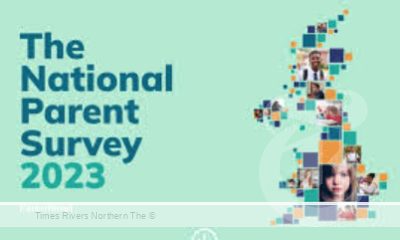Navigating Life’s Symphony: A Journey with ADHD
Once upon a time in a bustling suburban neighbourhood, there lived a young boy named Anthony. Anthony was a bright and imaginative child, but from a very early age, he exhibited signs of restlessness, impulsivity, and difficulty focusing. His parents, Sarah and David, became increasingly aware that Anthony might be dealing with Attention Deficit Hyperactivity Disorder (ADHD).
Anthony’s journey with ADHD was a unique and challenging one, and it began in earnest when he started school. His teachers noticed his inability to sit still, his tendency to daydream, and his struggles with organisation. Sarah and David decided it was time to seek professional guidance.
After a thorough evaluation, Anthony was diagnosed with ADHD. Although the diagnosis was overwhelming, it was also a turning point. Armed with knowledge, the family began to explore ways to navigate this new path together.
The first step was to educate themselves. They read books, attended workshops, and reached out to support groups in their community. Understanding ADHD allowed them to see it not as a limitation but as a difference that could be harnessed to its advantage.
Advertisements

Anthony’s journey with ADHD was not without its challenges. Homework was often a battleground, and the constant worry about school performance weighed heavily on the family. But they remained resilient. Sarah and David worked closely with Anthony’s teachers, developing strategies to help him thrive academically. They found that a structured routine, shorter study sessions, and frequent breaks helped him focus and complete his assignments more effectively.
Additionally, they sought medical advice. Anthony’s doctor recommended a combination of behavioural therapy and medication. Sarah and David were initially hesitant about medication, but after thorough research and consultation with healthcare professionals, they decided to give it a try. The medication, when properly monitored and adjusted, made a significant difference in Anthony’s ability to concentrate and control his impulses.

As Anthony continued to grow, the family explored various extracurricular activities. They discovered that music, particularly playing the drums, had a profound impact on Anthony. It became an outlet for his excess energy and a way to channel his creativity. His passion for music was nurtured, and soon he was performing in school concerts and local events. This newfound skill boosted his self-esteem and self-worth.
One of the most vital aspects of Anthony’s journey was open and honest communication. The family maintained an environment where Anthony felt comfortable discussing his feelings and challenges. They emphasized that ADHD did not define him but was just one part of his unique identity.
Over the years, Sarah and David noticed that Anthony’s ADHD traits, though still present, had become less of a hindrance and more of a strength. His boundless creativity, his ability to hyperfocus on tasks he was passionate about, and his resilience in the face of adversity all showcased the remarkable aspects of his condition.
As he approached adolescence, Anthony’s self-awareness grew. He began managing his own medication and setting goals for himself. His journey was a continuous learning process, but it was remarkable to see him develop into a young man who understood his own mind and how to make the most of it.
By the time Anthony graduated from high school, he was a talented musician and a conscientious student. With the support and understanding of his family, teachers, and therapists, he had turned ADHD into a superpower, rather than a stumbling block. As he ventured off to college, the future was bright, and he was ready to face whatever challenges came his way.
Anthony’s story is a testament to the power of love, understanding, and resilience. Through education, patience, and unwavering support, he was able to transform the difficulties associated with ADHD into strengths that set him on a path to success and fulfillment. His journey was a symphony, and each challenge and triumph played its own unique note in the beautiful melody of his life.
For more health news, click here.





 Tweed Shire News2 years ago
Tweed Shire News2 years ago
 Motoring News1 year ago
Motoring News1 year ago
 COVID-19 Northern Rivers News3 years ago
COVID-19 Northern Rivers News3 years ago
 COVID-19 Northern Rivers News3 years ago
COVID-19 Northern Rivers News3 years ago
 Northern Rivers Local News3 years ago
Northern Rivers Local News3 years ago
 Health News3 years ago
Health News3 years ago
 COVID-19 Northern Rivers News3 years ago
COVID-19 Northern Rivers News3 years ago
 NSW Breaking News3 years ago
NSW Breaking News3 years ago































